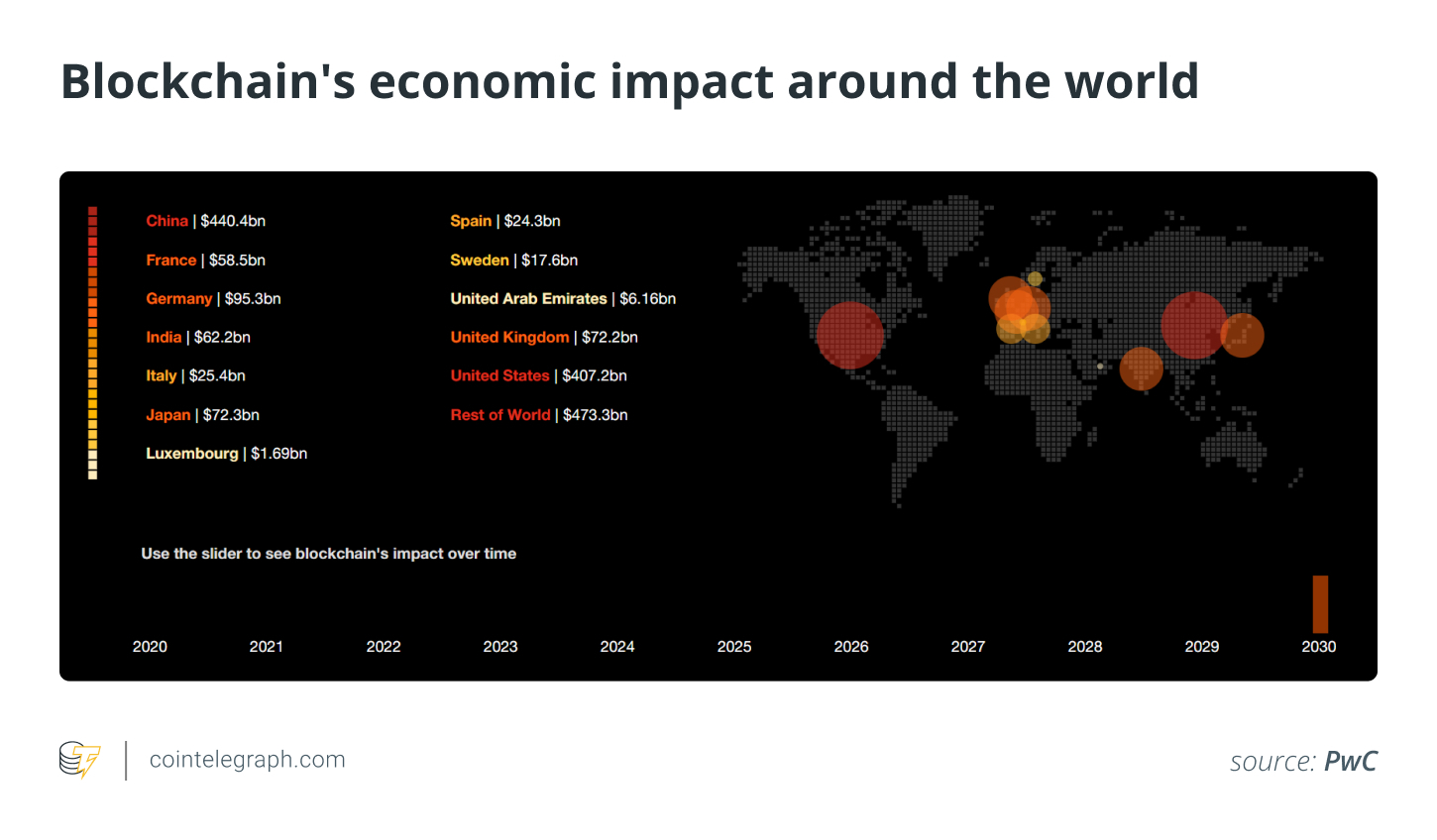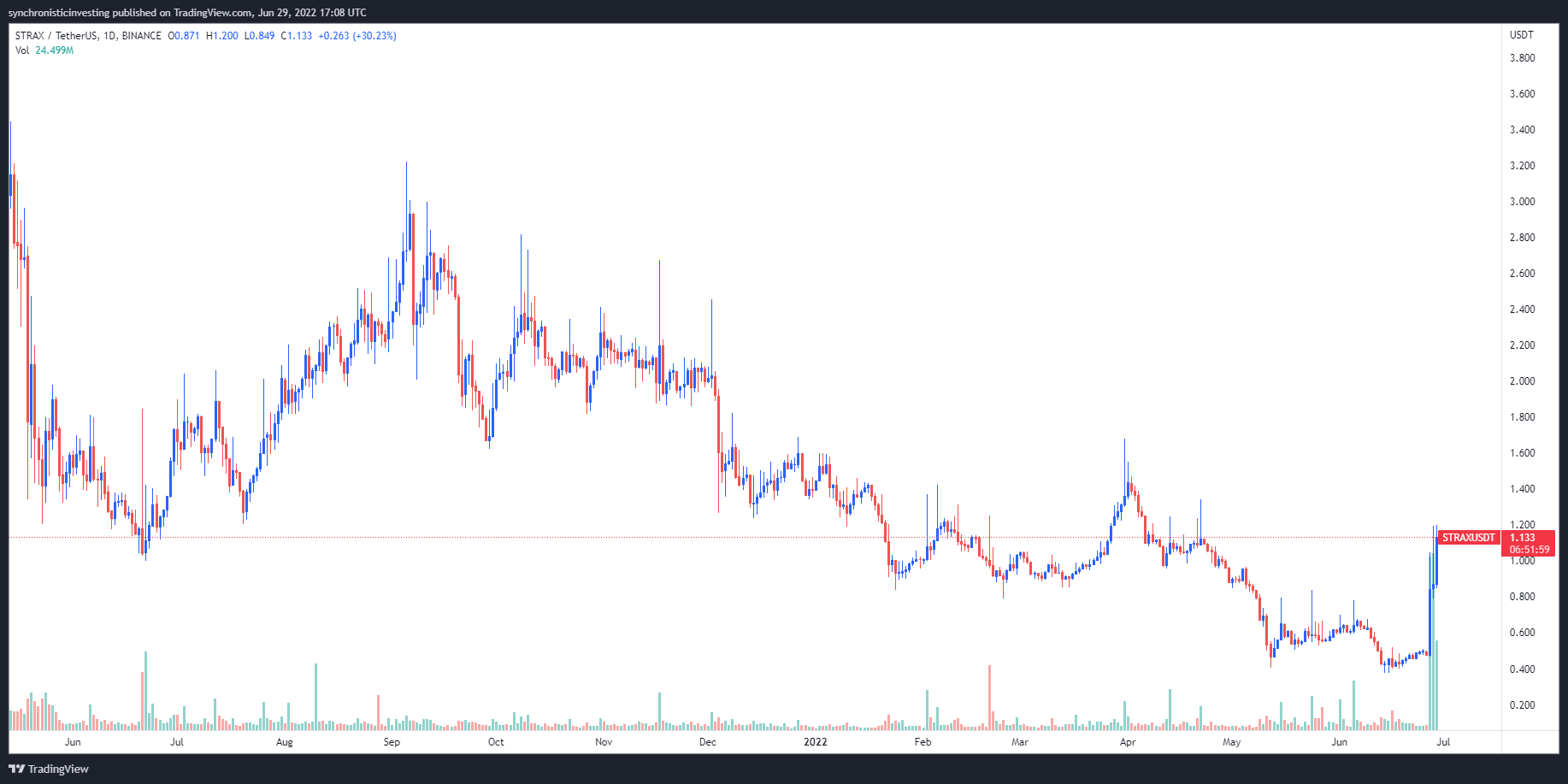Consensus 2022 proved that “Everything is larger in Texas” was true. This year’s crypto conference was held in Austin, Texas from June 9-12. It attracted 17,000 attendees from all over the world, despite the 100-degree weather. Consensus 2018, held at the Hilton Hotel, New York, was reportedly attended by almost 9,000 people.
Caitlin LONG, Custodia’s CEO and Wyoming-based digital asset bank Custodia, told Cointelegraph that this year’s event speaks volumes. “New York has sent a lot this industry fleeing to Texas, Wyoming, and Miami. It will be fascinating to see if New York is able to make a comeback.
The event was also influenced by current market conditions. Participants were optimistic about the future of crypto as a whole. The main topics of discussion were Web3’s rise and new projects. Ray Youssef is the founder and CEO at Paxful, a peer to-peer cryptocurrency marketplace. He told Cointelegraph that crypto-winters allow building phases to begin. This is something he supports. “We’re seeing projects create platforms that are real, and empower.”
In a bear market, building the crypto ecosystem
Youssef made the point that Web3 and new tools for advancing crypto ecosystems were hot topics. Meltem Demirors (chief strategy officer at CoinShares), a digital asset investor firm, told Cointelegraph that she has noticed an increase in interest in different aspects of the crypto industry despite the bear markets.
“I’m seeing different pockets and niches of crypto, some of them I’ve never heard of. The STEPN group, which is a movement to earn money, is one example. There is also a huge music NFT and fashion NFT scene. These are the newer communities that I have read about and engaged with. However, it was really enjoyable to see them gather and host their events.
At the event, Demirors spoke on the topic of cults. He discussed how the crypto community is creating a shared identity, belief system and lifestyle rituals around emerging projects. Although cults are often associated with negative things, there is a huge crisis of meaning today. People are no longer focused on their nationality, occupation, or religion. She explained that crypto is playing an interesting role in bringing people together through memes and capitalism, as well as community values. Demirors stated that crypto cults are appealing to many people due to their sense of purpose and capital. She said that there was an “interesting convergence.”
Staci Warden of the Algorand Foundation told Cointelegraph that the crypto market continues to attract new participants. However, Alogrand sees this crypto winter as an opportunity to build. She stated that she believes there will be a shakeout in the industry, and she is ready to innovate.
Warden explained that the Algorand community is focusing on Web3’s potential financial inclusion. Warden explained that Web3 has a significant impact on a variety of main industries, such as fashion, and the creator economy. Justin Banon, cofounder of the Boson Protocol, a decentralized network for commerce, spoke out to Cointelegraph. He said that the crypto sector saw the nonfungible tokens (NFT) craze last year. This has prompted fashion industry participation.
“Physical fashion won’t disappear, but digital is here.” He said that it was obvious that both will merge and become one thing. Banon said that the majority of the world’s population will spend more time online, and that digital fashion will be essential. He said, “This will enable us to identify ourselves and distinguish ourselves.”
Solo Ceesay, cofounder of Calaxy, an open social marketplace for creators, told Cointelegraph that Calaxy has recently raised $26million in strategic funding to expand its operations.
Web3-focused projects have seen a lot of success, but it is important to note that the current market conditions are challenging for key players. Cointelegraph spoke with Peter Wall, CEO at Argo Blockchain, a cryptocurrency mining company. He said that while many Bitcoin miners have raised equity by 2021, it has been difficult for some due to the bear market.
He stated that there are only two options for miners to raise capital right now: through debt or selling Bitcoin. Wall explained that loans will only be granted to miners who have a good track record. They must be able execute clearly with plans and not over commit to machines or bills that they cannot pay.
The regulatory environment for crypto in the United States
The conference also covered regulations. It shouldn’t surprise that a variety of important regulatory events occurred prior to the conference. The bipartisan crypto bill, also known by the “Responsible Financial Innovation Act”, was introduced in United States Senate June 7, 2022. The bipartisan bill, sponsored by Senators Cynthia Lummis from Wyoming and Kirsten Gillibrand, of New York, “addresses CFTC jurisdiction, stablecoin regulations, banking, tax treatment digital assets and interagency coordination.”
Cointelegraph was told by Senator Pat Toomey that he believes the bipartisan bill to be “terrific.” He also noted that the bill has modest differences in how stablecoins will be treated as compared to his stablecoin approach which was drafted in April of this year. Toomey said that although he hasn’t yet released a bill, there are “bridgeable” differences between his draft and the legislation from Lummis or Gillibrand.
“Kirsten Gillibrand stated on our panel that while we can reach a compromise on some things I said, it’s very constructive to see a Democrat senator and a Republican senator introduce a comprehensive bill that sensibly establishes a regulatory framework to allow this space the chance to flourish. It’s very constructive from that perspective.
Long echoed Toomey’s sentiments that the bipartisan bill was an important advance for the crypto sector. He stated, “This bill to watch in Washington.” There are currently 50 crypto bills in Congress. The only one that is bipartisan is sponsored by the powerful senator of New York State and the powerful senator on the senate bank from Wyoming. This bill is the state’s leading digital assets. This is quite an impressive combination.
Long also stated that the central bank digital currencies (CBDCs), stablecoin regulations, and central bank digital currency (CBDCs), will be important topics this year. For instance, although President Biden released an executive order in March 2022 calling for the research and development of a potential U.S. central bank digital currency, Long remarked that she does not believe the U.S. will issue a CBDC. “The FedNow Service will be available by the end this year, which is just six months away. We don’t yet know the details of this service, as there are no clear rules.
Long also predicts that stablecoins are a major focus for regulators. He points out that Wyoming’s special purpose depositary regime is in this category along with The New York State Department of Financial Services regulatory guidance to U.S. dollar-backed stabilizecoins issued DFS-regulated entities. Long said that it would be several years before we see the real impact of a law regarding stablecoins. She also noted that regulators had the chance to create regulations about stablecoins, but they have yet to do so. She stated:
“Regulators have ignored legitimate requests of parties who have sought permission while scams have flourished in this industry. Although it’s difficult, I believe regulators should have acted sooner. Many people wouldn’t be hurt if the regulators had acted sooner.
To reiterate Long’s point Toomey stated that he believes there is momentum and pressure to pass stablecoin legislation. Toomey stated that U.S Treasury Janet Yellen told the banking committee in front that it should be done this year, and that he believes that that is possible. Toomey said that the current collapse in the Terra ecosystem has made the pressure even greater.
“I believe it influences legislation because it draws attention to crypto space. It’s a wake-up call for the federal government. He stated that his view was that algorithmic stablecoins should not be treated differently from fiat/asset-backed stablecoins.
Optimism reigns
It’s remarkable that many ecosystem participants remain optimistic in the face of the current state cryptocurrency markets. Austin’s cryptocurrency community is thriving. It has become a hotspot for crypto mining companies as well as a variety of Web3 projects.
Patrick Stanley, a core contributor to City Coins — acryptocurrency projects that have been implemented New York State and Miami — told Cointelegraph that AustinCoin can be activated any time. He also mentioned that there is currently a group working on a proposal to get new CityCoins online.
“We want to be more deliberate in launching AustinCoin. There are already people in Austin, the capital and clear commitment. We want to make sure all this is done before activating AustinCoin.” Stanley said that Austin Mayor Steve Adler was a “cryptocurrency pro” and that CityCoins has less impact than big tech companies moving to Austin. “CityCoins allows you to get the tax revenue from a large company, without having to leave a footprint or move up in real estate. Mayor Adler found this very compelling,” he said.
Demirors said that she is also excited about the development of crypto infrastructures such as new data centres, semiconductors, and the overall “plumbing,” that allows cryptocurrency and other technologies to function properly. She stated that the U.S. must be a friendly country for developers to create software and hardware to scale.
Demirors acknowledges that not all legislation is being written around this aspect at the moment, but she hopes that Texas and other states will continue to embrace initiatives like mining. Demirors noted that crypto regulations don’t consider the right of financial privacy and consumer rights, noting that many bills call for greater financial surveillance. “I believe it’s important that we as an industry push back against that, especially in a world where CBDCs have been explored.”
It’s also important to note that the crypto industry continues to hire key players to assist with its advancements. Grayscale Investments has recently hired Donald B. Verrilli a former U.S. Attorney. To join the firm as a Solicitor General to push for a spot Bitcoin ETF. Verrilli stated during the Consensus press conference last week that he is working to improve public policy.
Verrilli aims at convincing the U.S. Securities and Exchange Commission to convert Grayscale’s Bitcoin Trust (GBTC), into a spot-based exchange traded fund. Verrilli stated that it is “arbitrary and capricious to treat cases that differ in some way.” He referred to the SEC’s approval for a Bitcoin futures ETF but not a Bitcoin spot ETF. It seems that this is a common-sense point. Although I’m new to this topic, it’s difficult to see how there could be an argument for treating these issues differently.








